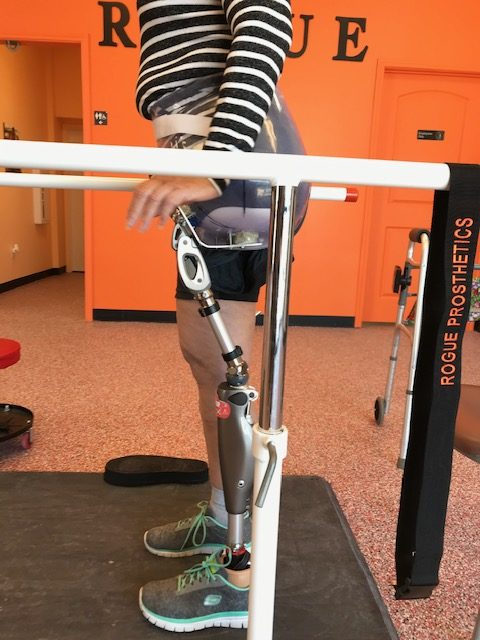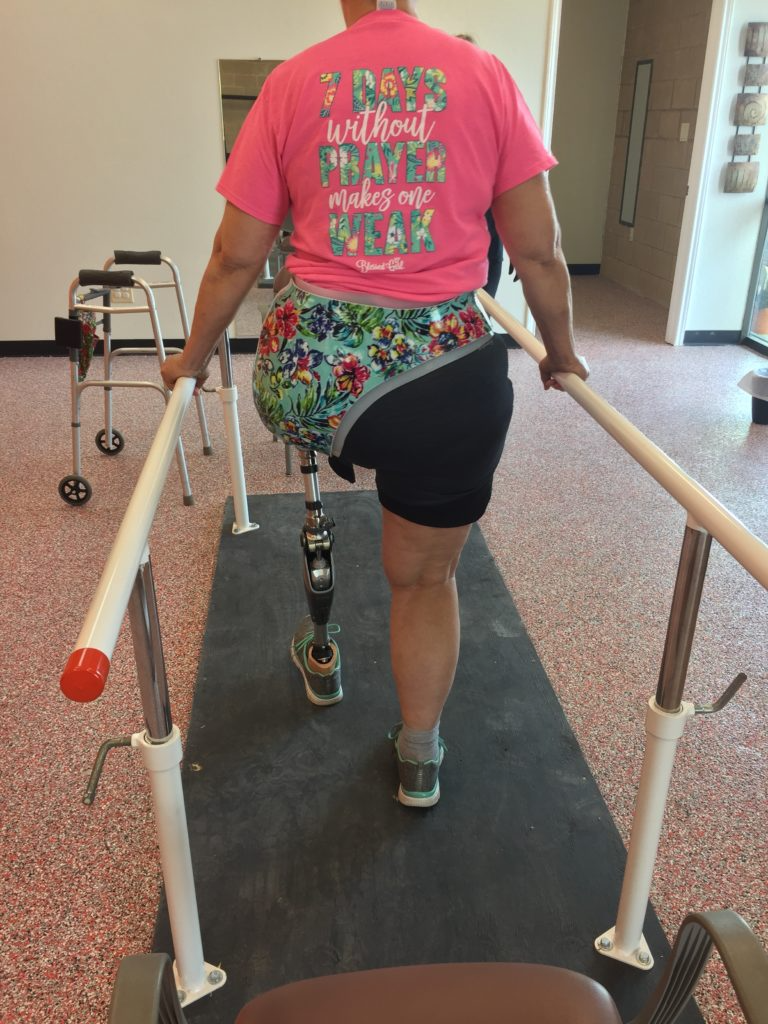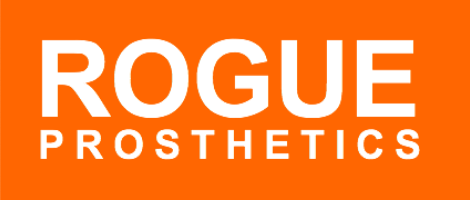Thank you for checking out our program,
THE NEXT STEP™!

Our goal as a prosthetic provider is to provide our patients with optimal care and treatment. We are here to support you and your family while you transition into your new life as an amputee. We understand that amputation may not have been a choice for you and there are many life challenges ahead.
What is THE NEXT STEP™ after an amputation?
After your surgery your doctor may have ordered a special rigid protector for your residual limb. This protector serves many purposes and it is a good idea to follow the wearing instructions provided with the protector. Some of the benefits of the rigid protector are:
- To control edema (swelling) and thereby facilitate wound healing.
- To protect the residual limb from possible trauma.
- Decreases opportunity for infection.
- To allow shaping of the residual limb prior to prosthetic fitting.
- To assist with pain control.
- It allows for frequent wound inspection without disrupting your staples/sutures and simulates the donning and doffing of a prosthesis.
- It provides confidence to the new amputee to participate in Physical Therapy

THE NEXT STEP™
Ready to take The Next Step™? Here is what to expect.
ONCE YOUR STAPLES/SUTURES ARE REMOVED
Once your staples/sutures have been removed and your physician has determined you are clear for fitting you are ready for THE NEXT STEP™. This involves a visit with your prosthetist for shrinker fitting and prosthesis evaluation. A shrinker is a special compressive sock that reduces swelling. When you have an amputation fluid collects in the limb and has to be expelled in order to wear a prosthesis successfully. This shrinker should be worn at all times unless otherwise instructed, especially during the first year after amputation. Generally, after one to two weeks of shrinker therapy you are ready to begin the fitting process.
SHRINKER THERAPY IS COMPLETE
Shrinker Therapy is done and you are ready for THE NEXT STEP™. This is exciting. You and your prosthetist will discuss your prosthetic goals and abilities. Based on your activity level, amputation level and what you want to do. Now it is time to make it happen. Once it is determined what type of prosthesis will work best for you, your prosthetist will measure and/or cast your residual limb for the “socket” portion of your prosthesis. Once this is done you are ready for THE NEXT STEP™.
INITIAL TEST SOCKET FITTING
Now that you have been cast for your prosthetist, you will try on a clear diagnostic test socket to verify how your prosthesis will fit. Various factors go into a socket that fits appropriately. We look for uniform snugness in the socket, make sure there are no areas that may bother you later on, and ultimately comfort and function. There may be more than one test socket fitting. Once you and your prosthetist have determined the fit is to your satisfaction you are ready for THE NEXT STEP™.
DELIVERY
Once you are done with test socket fittings it’s time to make the real deal. You and your prosthetist can discuss the customization of your socket. This part is fun. You can choose to have regular skin pigment, high-tech looking carbon fiber, or you can choose a favorite t-shirt or material that can be incorporated into the socket.
Your socket will be attached to your prosthetic components. For a transtibial (below the knee) prosthesis you will have a prosthetic foot. For a transfemoral (above the knee) prosthesis you will have a prosthetic knee and foot.
An upper extremity prosthesis will have a prosthetic hand for transradial (below the elbow) prosthesis and a prosthetic hand and elbow for transhumeral (above the elbow) prosthesis. If the amputation is higher, prosthetic shoulder joints are also available. You will also be provided with supplies to wear your prosthesis. These can include special gel liners, socks, sheaths, and anything else required to wear your prosthesis successfully.
Once you have your prosthesis you are ready for THE NEXT STEP™.
TIME TO WORK
Once you have your prosthesis and you have followed the break-in process and your prosthetist has determined your fit is optimal you are ready to start physical therapy. This is where you learn gait training (learn how to walk all over again), balance, stretching and strengthening.
THE NEXT STEP™
You will continue to see your prosthetist on a routine schedule, usually every 3-6 months (or whatever your needs are) to ensure proper fit and function of your prosthesis and to ensure your supplies are in good working order.
